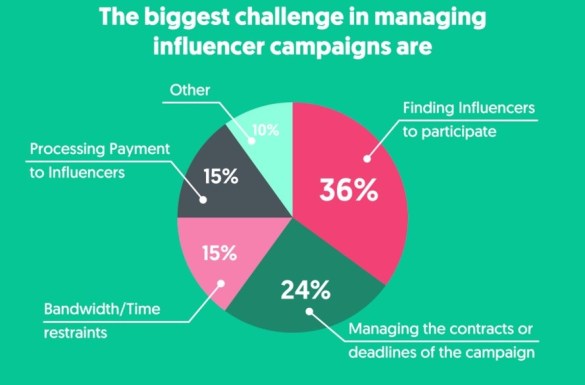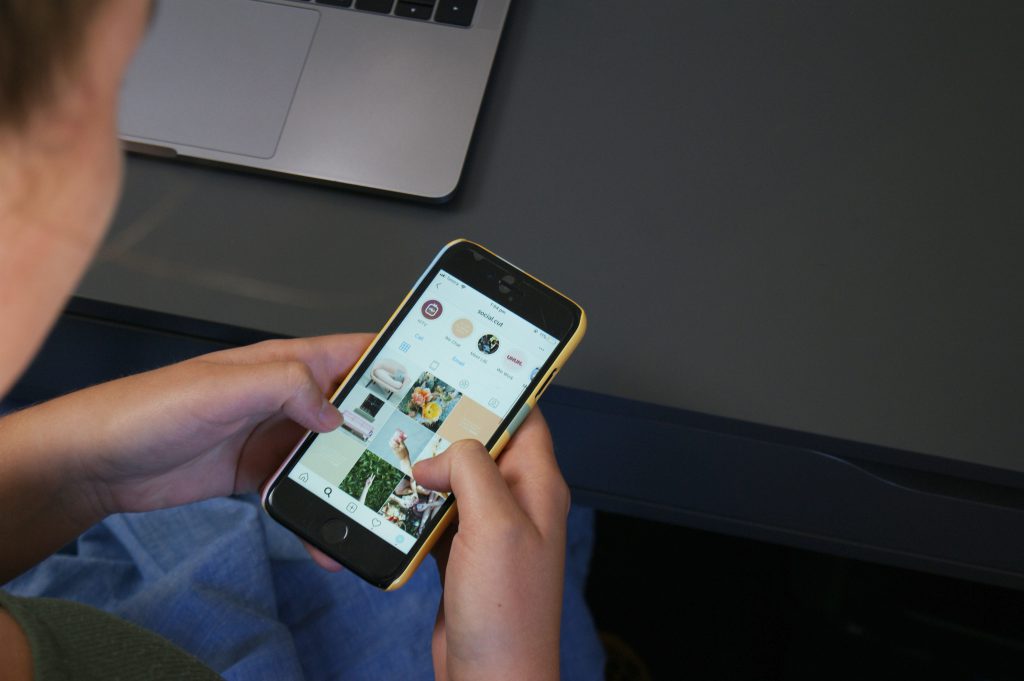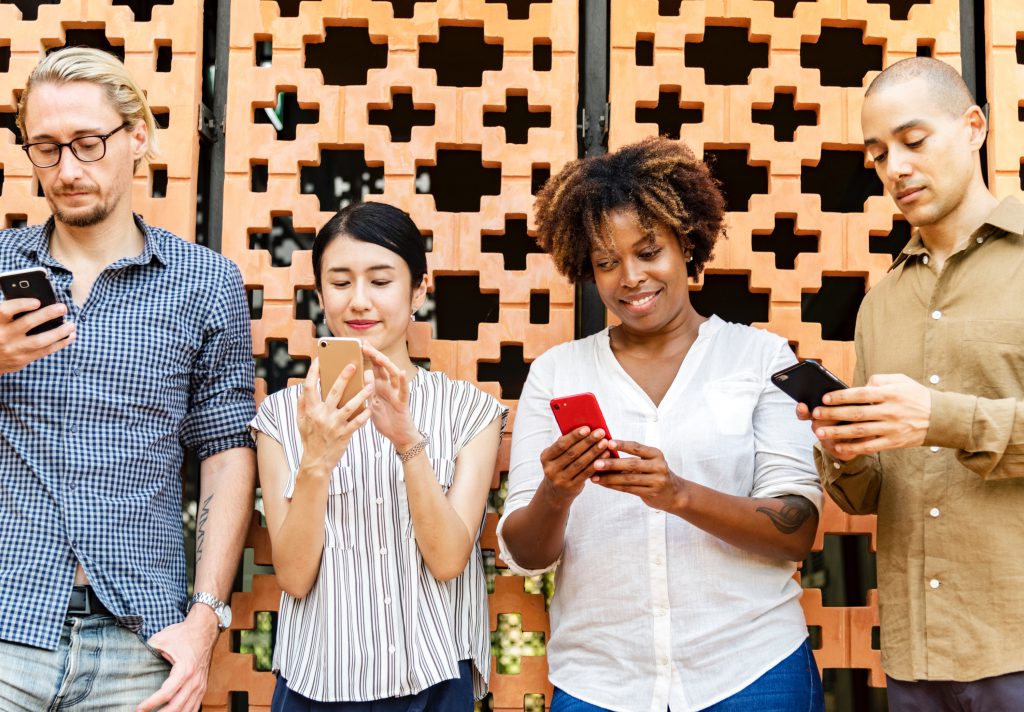The rise of influencer marketing was a fast one. 2016 saw the explosive growth of macro influencers and celebrities in marketing campaigns. By 2017, the market saw the need for micro-influencers – those with followings between 10,000 and 500,000. Partnering with micro-influencers became the best practice for brands hoping to get the most “bang for their buck.” Their smaller followings were more engaged than their macro counterparts, but their rates were often much more affordable. In 2018, the influencer marketing industry continued to grow, with the focus shifting from celebrities to everyday people celebrating the brands they love. The industry also matured, with a growth in the number of tools, metrics, and statistics available for engaging with and tracking results from influencers.
These days, influencer marketing seems to be ubiquitous. It is part of marketers’ social media and content strategies, it drives brand awareness and conversion campaigns, and it’s becoming a larger part of advertising as well. According to a study by Linqia, 39% of brands plan to increase their influencer marketing budget in the next year, with 93% of those surveyed reporting they will allocate more than $10,000 for influencer campaigns. This shift is largely due to consumer preferences.
Influencer content is outperforming brand-created content, with 49% of consumers reporting they found brand-created advertisements “annoying or irrelevant”. 82% of consumers said they were very likely to follow the recommendation of an influencer they follow, and 67% said they had no negative reaction to sponsored influencer content whatsoever.
Influencers are inundated with requests from brands and increasingly are able to pick and choose who they want to work with. A recent Influence.co study found that only 24% of influencers accept more than half of the offers they receive. According to IntroFuel’s findings below, finding influencers to participate is one of the top challenges in managing influencer campaigns.

Finding influencers is reported as the number one challenge in managing influencer campaigns.
(Source: IntroFuel)
Given the importance of influencer marketing on your overall strategy, it’s crucial to set your brand’s campaigns up for success and that all begins with a strong outreach plan. Read on for our 7 tips for effective influencer outreach.
1. Prior to Influencer Outreach, Research Top Candidates
The first step in developing a successful influencer relationship is to find the right partner(s). This can be a time consuming and overwhelming project, but new tools on the market have made it easier than ever to identify potential influencer partners. Sites such as Pitchbox and FameBit streamline the process by offering a “catalog” of influencer profiles, direct outreach capabilities, and an all-in-one management platform. It is especially helpful to get this information out of your Instagram DMs when you are trying to create a large scale influencer campaign or working with a large team. (For a comprehensive list of tools, check out our recent post on the topic.)
Of course, there is no replacement for old fashioned research directly on Instagram or YouTube. It is always a good idea to look into the social profiles of your potential partners. This will give you an understanding of what type of content they create, who their followers are, how they connect with their fans, and what other brands they have partnered with in the past.
Finally, enough can not be said about the importance of working with influencers that have an authentic connection to your brand. These partners are easiest to find within your own social profiles – look through your own followers to identify those with social influence of their own.
2. Establish Connections with Your Potential Influencers
Once you have identified a list of potential partners, start interacting with them on whatever social platforms they are on. No one likes to be cold called, so your goal here is to get on the influencer’s radar before you make an official pitch. This can be as simple as liking and commenting on their posts, tagging them in relevant conversations and interacting in a friendly way.
As we mentioned above, authenticity is key. According to a recent study by Hashoff, originality and authenticity was the number one consideration for influencers when choosing which campaigns and brands to work with. You can create that authentic connection simply by being a fan of their work. If they like what you do, they will become a fan of yours in return.

Connect with your influencers
Source: Photo by S O C I A L . C U T on Unsplash
3. Contact Them About a Campaign
Once you feel you have developed enough of a relationship, it’s time to craft a personal message and reach out. Utilize the learnings from your research to let them know why you want to work with them and how you believe the partnership would be a good fit.
You may have to test different methods of outreach to develop the best approach. You may find that you get a faster response on Instagram direct message than by email or vice versa. If you aren’t using a platform to manage your influencer outreach, make sure you have a system for recording communication. This could be a simple spreadsheet or an Asana project with notes on each influencer.
4. Be Clear About Your Expectations
Regardless of how much of a real connection you’ve developed with your influencer, always remember that this is a business transaction. Be specific about your expectations and communicate them to your partner. It’s important to identify what metrics you will use to track success, what platforms you want to use, and the number of posts you expect. Once you have the influencer on board, make sure to share all of this information with them.
If you aren’t sure what metrics you should be tracking, check out our recent post: Guide to Calculating Influencer Marketing ROI.
5. Make the Partnership Mutually Beneficial
A good influencer outreach email will also make it clear to the partner what’s in it for them. As the influencer marketing industry has matured, payment for sponsored posts has become the norm. Be clear about what you will pay and how the payment will work (e.g. a flat fee, commission percentage, or a combination of the two).
It’s important to value the influencer’s contribution to your marketing, but you should also think beyond a simple exchange of money. What benefits or perks can you offer the influencer in addition to their fee? For a product based brand, this could mean free product. For a service business, perhaps you could extend a free trial of your software. Perks also include invitations to special events, such as a behind the scenes tour, a product launch event, or even just asking them out to lunch. Make it a point to learn what your influencer really wants out of the relationship and do your best to make that happen.
6. Create Great Content
In the past year, we have seen the rise of a number of creative forms. These include video, stop motions, cinemagraphs, boomerangs, Stories, GIFs, and AR filters. When planning influencer campaigns, consider all of the different types of creative at your disposal and make a choice based on the campaign’s goals.
It’s also worth noting that 93% of influencer marketing campaigns now use Instagram and the use of Instagram Stories in these campaigns grew 60% in the last quarter. Make sure your creative decisions fit the platform that your influencers and their audiences are using.

Influencer Marketing Creative
Source: Tribe
Brands and influencers alike want to create and share content that fits with their brand and engages audiences. Work together with your partners to develop creative that works for both sides, but keep in mind that your influencer knows what their audience likes best. Whenever possible, let them take the lead on creative that they will be asked to share.
7. Think Long Term: Nurture Your Relationships
Don’t think of your influencer campaigns as a one-and-done. In 2019, it’s a best practice to develop a roster of influencer partners that you can regularly engage in campaigns. Stay in touch with this group of influencers – reach out periodically with news and opportunities from your brand, and pay attention to their updates on social media. If they share something big, send them a note congratulating them.

Nurture Your Influencer Relationships
Source: Photo by rawpixel.com from Pexels
Post-campaign, make sure to send the influencer a thoughtful thank you note and share the results from your campaign. As with all relationships, they”ll improve and grow more collaborative in nature over time. Even if the campaign results weren’t what you hoped for, there is still value in nurturing the relationship you’ve already invested a lot of time in.
By 2020, influencer marketing is projected to become a $10 billion industry. That’s a big number that your brand can’t afford to ignore. But influencer marketing doesn’t have to be complicated. At its core, influencer marketing involves identifying key people who can serve content to your target audience. The best influencer marketing campaigns grow out of real relationships that are fostered and built over time. Influencer outreach is a critical component in developing these relationships. Do your research, make real connections, be specific about your goals, share great creative, and nurture your relationships. Follow these simple steps for outreach and you will see your influencer campaigns flourish.
A few other posts about influencer marketing strategy you might find helpful:
- How-To Guide for Calculating Influencer Marketing ROI
- 10 Tools to Help You Run a Highly Successful Influencer Marketing Program
- Top 10 Paid and Free Influencer Marketing Tools
Join us at an upcoming social media strategy conference to learn actionable strategies to help you launch, measure and maintain your influencer marketing program!









